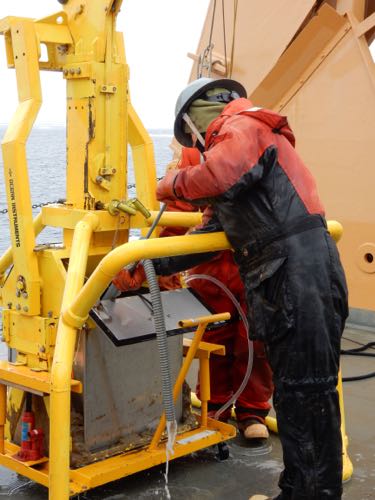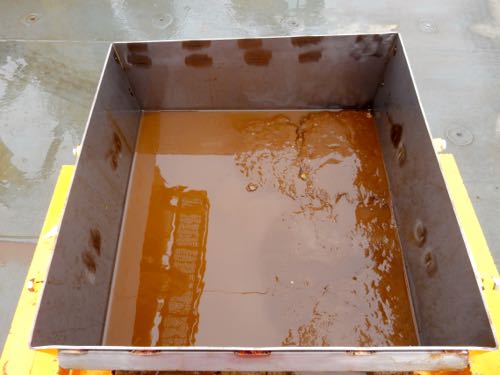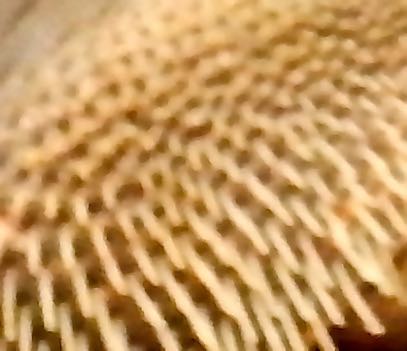A portion of my time at each station is devoted to sieving mud from the box corer. We are at 2100+ meters depth, so it takes over two hours to send the box corer to the bottom and then retrieve it; less time is required at shallower depths. Box coring is usually planned for each station, and three samples are collected. This means a lot of hours and a lot of mud!
Once the sediment is in the boat, the work of processing the mud for organisms begins. Different layers of mud are collected and washed through sieves. I jokingly refer to this as "panning for polychaetes". PolychaetesA large and diverse group of segmented marine worms. All possess an array of bristles on their many leg-like parapodia. are mostly marine, segmented worms that range in size from a few millimeters to several centimeters, with some species larger or smaller than this range. Other organisms, such as brittle stars and mollusks, are also found as are the unseen bacteria and other microbes. Samples of the mud itself are collected for microbial analysis.
What remains in the sieves is transferred to labeled bottles to be preserved for later analysis. As noted in a previous journal, analysis of the samples will contribute to a profile of benthic biodiversity at different depths and locations in the Arctic. It is interesting to see what comes up from each box corer deployment, and it is also interesting to compare the different textures of mud. The samples taken from the bottom of the core are usually "stickier" and take a longer time to wash through the sieve. Here are some photos of the box corer and its samples.



Question and Answer
Mystery Photo: Can you identify what is shown in the mystery photo below? Post your answers to this journal.

Answer to Last Q: Adult male pacific walruses may be up to 12 feet long and weight up to 2 tons; females are generally smaller, but can weigh over 1 ton.
PolarConnect Event August 8th
Make plans to "attend" the PolarConnect event on August 8th at 6 PM EDT/2 PM ADT. The event is free, but you will need to register and obtain an access code. Details on registration will be forthcoming. This will be a great opportunity to ask questions about the expedition and speak with some of the science teams!


Comments